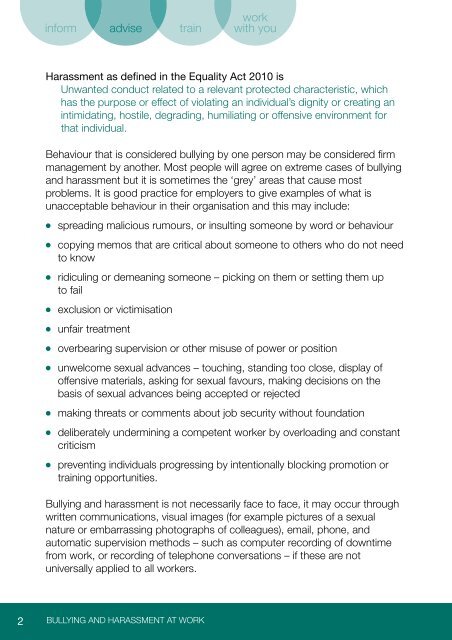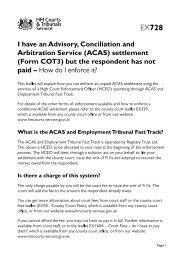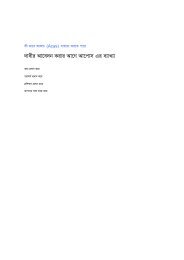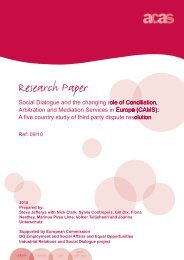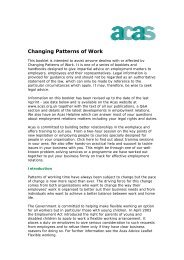Bullying and harassment at work: a guide for managers and ... - Acas
Bullying and harassment at work: a guide for managers and ... - Acas
Bullying and harassment at work: a guide for managers and ... - Acas
You also want an ePaper? Increase the reach of your titles
YUMPU automatically turns print PDFs into web optimized ePapers that Google loves.
Harassment as defined in the Equality Act 2010 is<br />
Unwanted conduct rel<strong>at</strong>ed to a relevant protected characteristic, which<br />
has the purpose or effect of viol<strong>at</strong>ing an individual’s dignity or cre<strong>at</strong>ing an<br />
intimid<strong>at</strong>ing, hostile, degrading, humili<strong>at</strong>ing or offensive environment <strong>for</strong><br />
th<strong>at</strong> individual.<br />
Behaviour th<strong>at</strong> is considered bullying by one person may be considered firm<br />
management by another. Most people will agree on extreme cases of bullying<br />
<strong>and</strong> <strong>harassment</strong> but it is sometimes the ‘grey’ areas th<strong>at</strong> cause most<br />
problems. It is good practice <strong>for</strong> employers to give examples of wh<strong>at</strong> is<br />
unacceptable behaviour in their organis<strong>at</strong>ion <strong>and</strong> this may include:<br />
●●<br />
●●<br />
●●<br />
●●<br />
●●<br />
●●<br />
●●<br />
●●<br />
●●<br />
●●<br />
spreading malicious rumours, or insulting someone by word or behaviour<br />
copying memos th<strong>at</strong> are critical about someone to others who do not need<br />
to know<br />
ridiculing or demeaning someone – picking on them or setting them up<br />
to fail<br />
exclusion or victimis<strong>at</strong>ion<br />
unfair tre<strong>at</strong>ment<br />
overbearing supervision or other misuse of power or position<br />
unwelcome sexual advances – touching, st<strong>and</strong>ing too close, display of<br />
offensive m<strong>at</strong>erials, asking <strong>for</strong> sexual favours, making decisions on the<br />
basis of sexual advances being accepted or rejected<br />
making thre<strong>at</strong>s or comments about job security without found<strong>at</strong>ion<br />
deliber<strong>at</strong>ely undermining a competent <strong>work</strong>er by overloading <strong>and</strong> constant<br />
criticism<br />
preventing individuals progressing by intentionally blocking promotion or<br />
training opportunities.<br />
<strong>Bullying</strong> <strong>and</strong> <strong>harassment</strong> is not necessarily face to face, it may occur through<br />
written communic<strong>at</strong>ions, visual images (<strong>for</strong> example pictures of a sexual<br />
n<strong>at</strong>ure or embarrassing photographs of colleagues), email, phone, <strong>and</strong><br />
autom<strong>at</strong>ic supervision methods – such as computer recording of downtime<br />
from <strong>work</strong>, or recording of telephone convers<strong>at</strong>ions – if these are not<br />
universally applied to all <strong>work</strong>ers.<br />
2<br />
BULLYING AND HARASSMENT AT WORK


